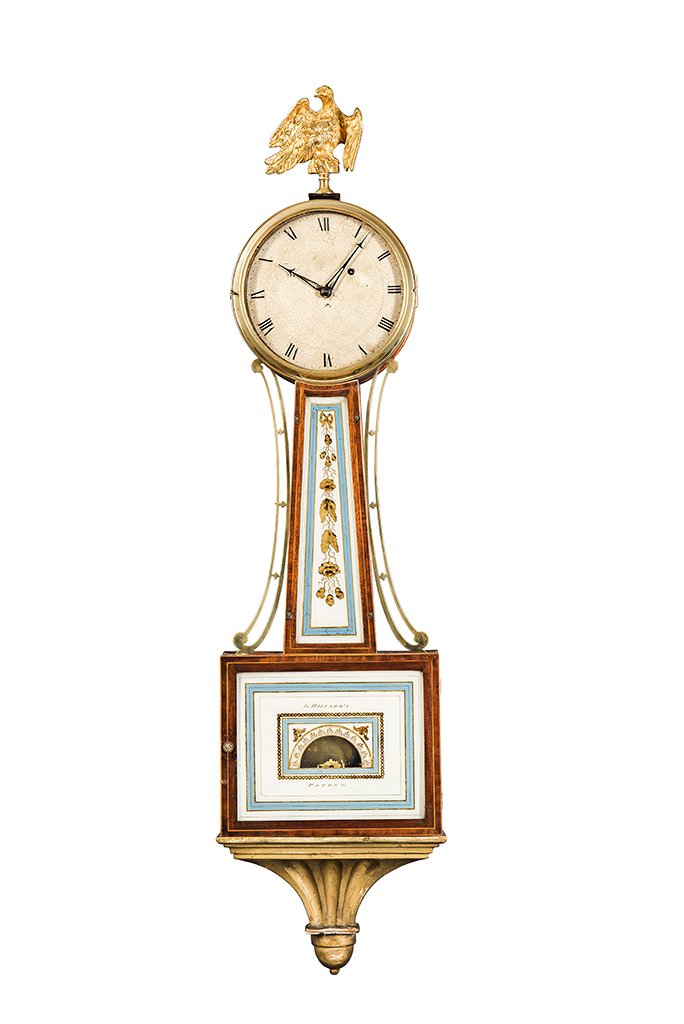Simon Willard (1753-1848), Roxbury, Massachusetts, ca. 1810
2.96.10 Willard House and Clock Museum, Robinson bequest
Painted iron dial 7 9/16” d, with Roman numerals, painted red dots for minute track with slash marks at the five minute intervals. Gold leaf band on outer edge. Open loop, barbed steel hands. Dial attached by two “L” shaped turns and two guide pins.
This mahogany cased timepiece has a five piece backboard. The bottom of the case is dovetailed to the case sides and a gold leafed bracket is attached to the base. The eagle finial, bezel, and side rails are all cast brass; the eagle is an excellent example of a timepiece finial.
2.96.10 Detail
The flat mahogany frames are of blind mortise and tenon construction with cross banding of mahogany and string inlay. The throat frame is attached to the case by four visible screws and is recessed into the case to give a thinner appearance. The glass tablets have matching borders on the throat and box of blue and gold banding. In the throat glass there is an acorn and leaf design; the lower glass has a rectangular center with a semi-circular pendulum opening which originally had fine gold rays extending up the center; "S. Willard Patent" is in block lettering.
Eight-day movement with brass plates and wheels, steel pinions, dead-beat escapement with T-bridge suspension. Movement attached to case by two fillister head screws. Brass-faced lead pendulum bob with an iron rod. Lead weight.
Ht. 29 1/4” 2.96.10
Click on the Detail to see a larger view.
